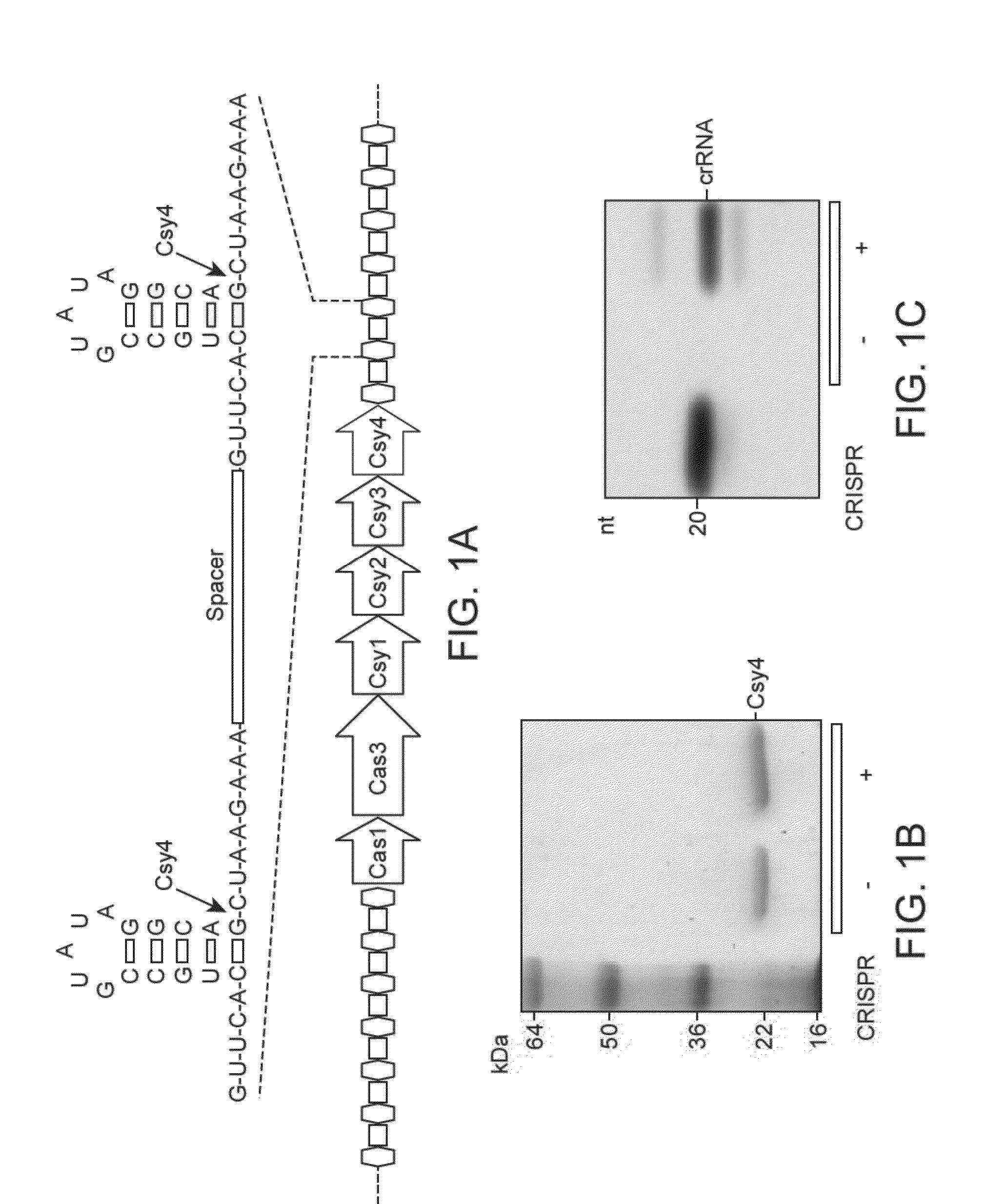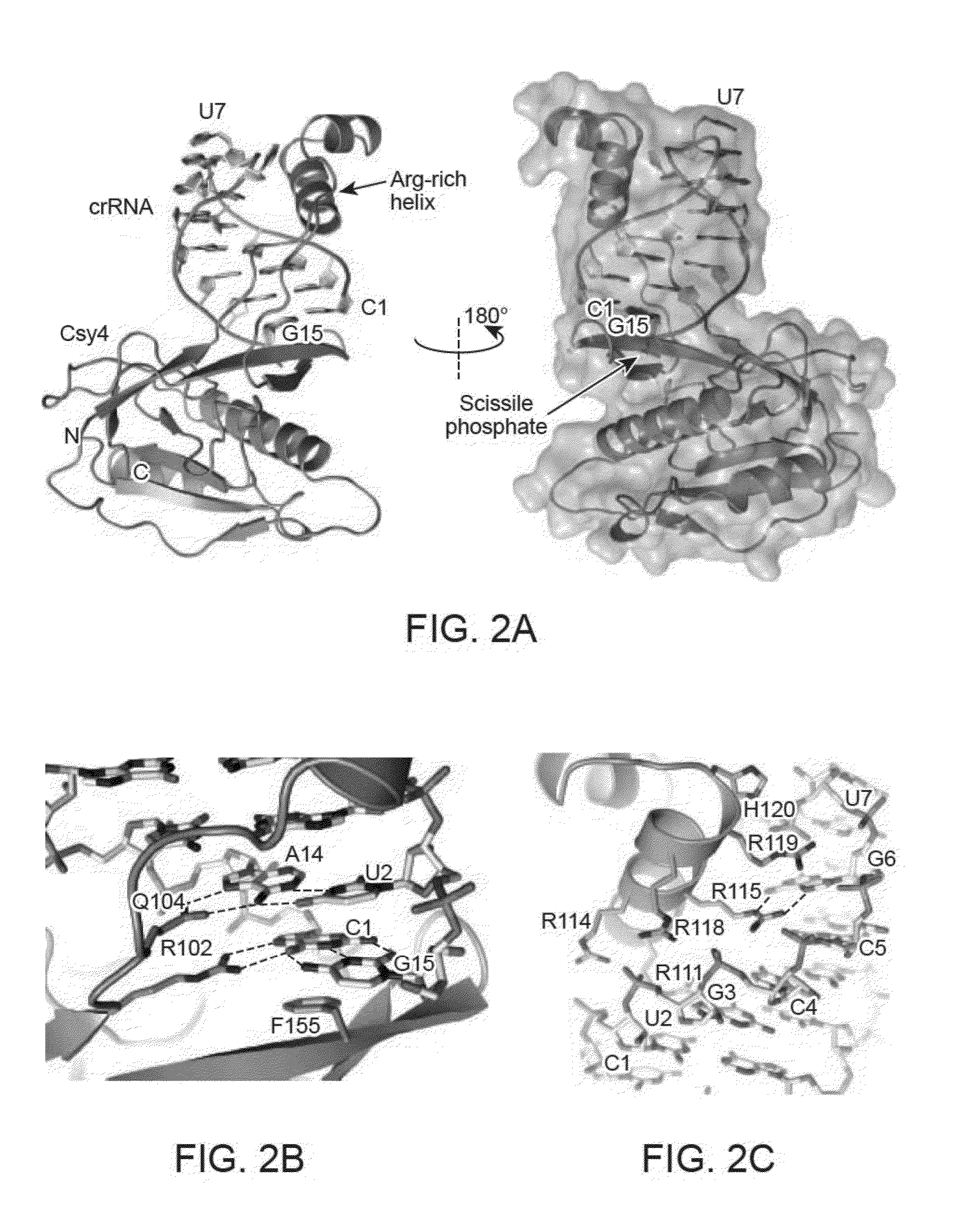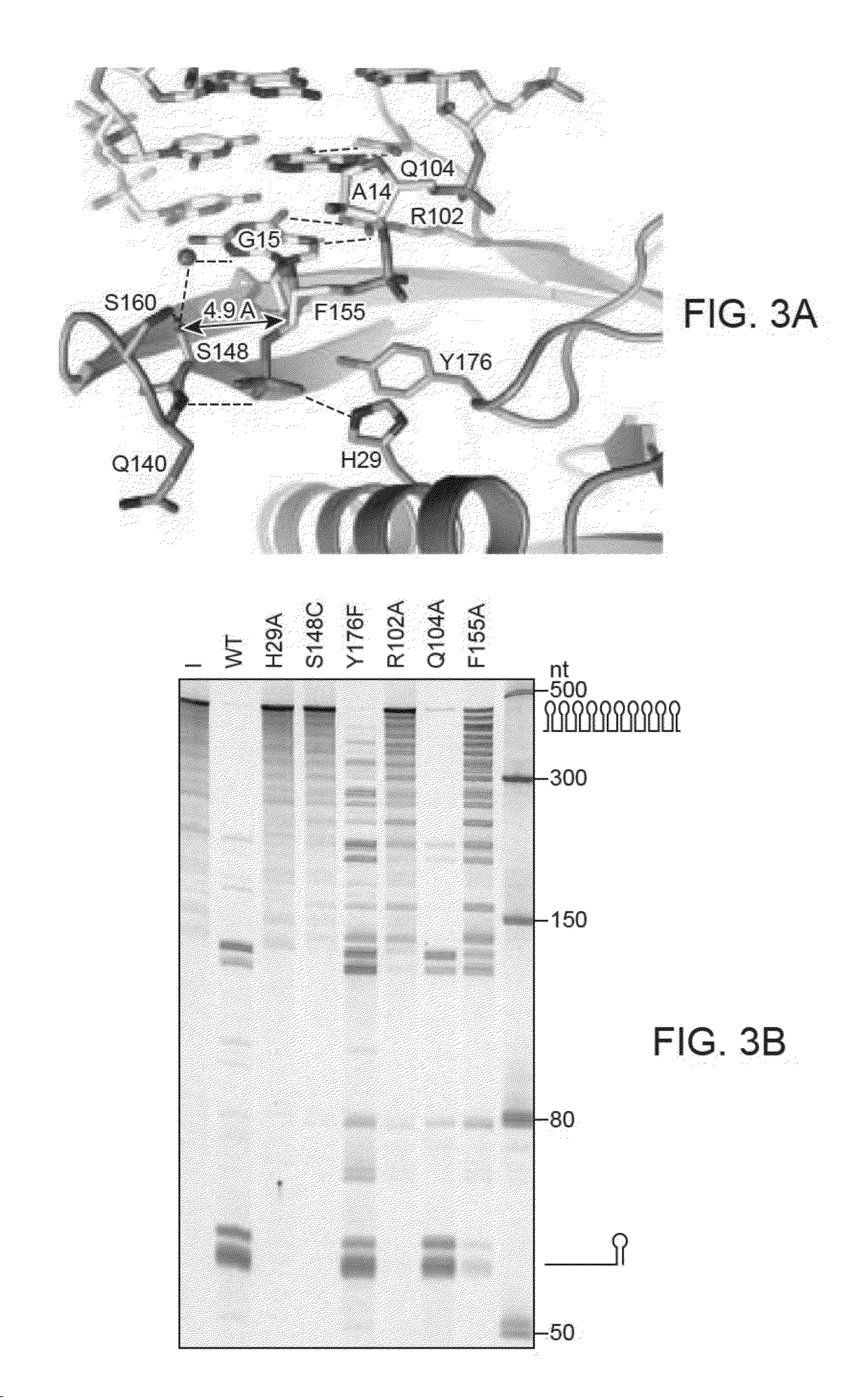Endoribonuclease compositions and methods of use thereof
a technology of endoribonuclease and composition, applied in the field of endoribonuclease composition and, can solve the problem of inherent bias in the generation of cdna
- Summary
- Abstract
- Description
- Claims
- Application Information
AI Technical Summary
Benefits of technology
Problems solved by technology
Method used
Image
Examples
example 1
Direct RNA Detection and Sequencing Using Csy4 Family Proteins
Materials and Methods
[0179]Wild-type Csy4, point mutants and selenomethionine (SeMet)-substituted Csy4 were expressed in Rosetta 2(DE3) cells as either a His6-maltose binding protein (MBP) fusion or a His6 fusion protein and purified by Ni-affinity chromatography, followed by proteolytic removal of the His(MBP) tag, a further Ni-affinity step, and size exclusion chromatography. The pre-crRNAs were transcribed in vitro with T7 polymerase and purified on a denaturing gel. The complex was formed by incubating RNA with Csy4 at a 2:1 ratio for 30 minutes at 30° C. followed by size exclusion chromatography. The complex was crystallized using the hanging-drop method in 200 mM sodium citrate pH 5.0, 100 mM magnesium chloride, 20% (w / v) poly(ethylene glycol) (PEG)-4000 (wild-type (WT) complex) or 150 mM sodium acetate pH 4.6, 17% PEG4000 or 160 mM sodium acetate pH 4.6, 18% PEG4000 (S22C-containing complex). The structure of the W...
example 2
Direct RNA Sequencing
[0202]An RNA can be sequenced at the single-molecule level using Förster Resonant Energy Transfer (FRET). The RNA to be sequenced will be attached to a solid surface through its 3′ ribose. The RNA should be spaced far enough from neighboring RNA molecules on the surface to allow detection at the single-molecule level. The spacing is dictated by diffraction-limited methods, dependent on the wavelength of emitted light. Alternatively, the RNA spacing can be closer than the diffraction limit, if super-resolution imaging methods are used. In the first sequence detection step, a Csy4 family protein of known nucleic acid binding specificity is added to the RNA to be sequenced, along with a pool of detection oligonucleotides. The Csy4 protein will only bind to the RNA to be sequenced if one of the detection oligonucleotides can form a 4 base pair double helix with the RNA to be sequenced. In addition, the detection nucleotide must base pair with an additional 3 nucleot...
example 3
Inducible Sequence-Specific Endoribonuclease
[0203]Via biochemical and structural techniques, point mutants of Csy4 that lack cleavage activity, while retaining substrate binding activity, have been generated. An example is the above-described Csy4(H29A) mutant. The otherwise catalytically inactive Csy4(H29A) mutant can be reactivated in the presence of exogenous imidazole. Addition of between 150 mM and 300 mM imidazole to the reaction buffer is sufficient to stimulate near-wild type cleavage activity. The results are shown in FIG. 8. FIG. 8 shows a cleavage activity assay depicting the imidazole rescue. Csy4H29A is a catalytically inactive mutant of Csy4 that retains the ability to bind its substrate with a kd of <1 nM.
[0204]Reaction details for FIG. 8: Each 10 μl reaction contains 5 pmol of the in vitro transcribed pre-crRNA substrate, 100 pmol of Csy4 (WT or H29A, as indicated in FIG. 8), 20 mM HEPES pH 7.5, 100 mM KCl, and 150-300 mM imidazole, as indicated. Reactions were carri...
PUM
| Property | Measurement | Unit |
|---|---|---|
| Fraction | aaaaa | aaaaa |
| Molar density | aaaaa | aaaaa |
| Molar density | aaaaa | aaaaa |
Abstract
Description
Claims
Application Information
 Login to View More
Login to View More - R&D
- Intellectual Property
- Life Sciences
- Materials
- Tech Scout
- Unparalleled Data Quality
- Higher Quality Content
- 60% Fewer Hallucinations
Browse by: Latest US Patents, China's latest patents, Technical Efficacy Thesaurus, Application Domain, Technology Topic, Popular Technical Reports.
© 2025 PatSnap. All rights reserved.Legal|Privacy policy|Modern Slavery Act Transparency Statement|Sitemap|About US| Contact US: help@patsnap.com



